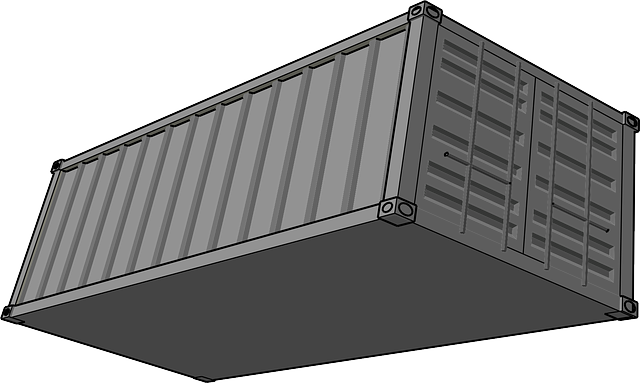Small fleet owners face a challenge in finding liability insurance that aligns with their unique needs. By understanding and leveraging affordable insurance for small fleets, they can effectively manage costs while mitigating risks. This involves assessing fleet risk factors like vehicle age, driving history, and routes to tailor coverage options. Bundling policies, regular risk reviews, safety protocols, and targeted fleet management strategies help reduce claims and lower costs. Using online platforms to compare quotes from multiple insurers and exploring niche providers further optimizes rates and ensures adequate protection for small fleets.
Managing costs while ensuring adequate liability insurance for your small fleet can be a complex task. This comprehensive guide navigates the essential steps to protect your business without breaking the bank. We explore how to assess your fleet’s unique risk profile, strategies to reduce expenses, and effective market navigation techniques for securing affordable insurance options specifically tailored to small fleets. By following these insights, you’ll streamline the process and safeguard your investment.
Understanding Liability Insurance for Small Fleets: A Comprehensive Guide

For small fleet owners, managing liability insurance costs effectively is a delicate balance. It’s crucial to understand that traditional insurance policies often fail to cater to the unique needs of smaller operations with several vehicles. However, with a comprehensive grasp of affordable insurance for small fleets, these businesses can mitigate risks and ensure their financial health.
Navigating this landscape involves delving into specialized coverage options designed specifically for fleet management. These policies offer tailored protection against liability claims, property damage, and even driver errors. By understanding the intricacies of such insurances, small fleet managers can make informed decisions to strike a balance between comprehensive coverage and cost-efficiency, ultimately fostering sustainable growth in today’s competitive market.
Assessing Your Fleet's Risk Profile and Coverage Needs

When managing costs for an affordable insurance small fleet, assessing your fleet’s risk profile is a critical first step. This involves evaluating factors like vehicle age, driving history, and typical routes to identify potential hazards. For instance, older vehicles may require higher coverage due to increased repair costs, while high-risk drivers or frequent city driving can elevate the chances of accidents, necessitating more comprehensive insurance plans. Understanding these risks allows businesses to tailor their coverage, ensuring they’re not overpaying for low-risk aspects and underprotected in areas that demand more attention.
This risk assessment should also consider operational needs unique to small fleets. For example, if your fleet includes specialized vehicles or operates during off-peak hours, specific coverage might be required to account for these scenarios. By matching insurance plans with accurate risk profiles and operational demands, businesses can achieve effective cost management without compromising on vital protection.
Strategies to Reduce Costs Without Sacrificing Protection

Many businesses, especially those managing small fleets, often face a delicate balance between keeping costs down and maintaining adequate liability coverage. To achieve this, consider implementing strategic cost-saving measures that don’t compromise protection. One effective approach is to bundle insurance policies. Combining liability insurance with other business coverages, such as property or worker’s compensation, can lead to significant discounts. This is because insurers often offer lower rates when multiple policies are purchased together, known as multi-line discounts.
Additionally, regularly reviewing and updating your fleet’s risk assessment is crucial. As businesses evolve, so do their operations and risks. Stay vigilant by reassessing potential hazards, implementing new safety protocols, and ensuring that drivers are well-trained. These proactive measures can help prevent accidents and reduce claims, ultimately lowering insurance costs. Targeted fleet management strategies, like efficient routing and regular maintenance checks, also contribute to safer operations and better insurance rates for affordable insurance small fleets.
Navigating the Market: Finding Affordable Insurance Options for Small Fleets

Navigating the market for insurance can be a daunting task, especially for small fleet owners who are looking to manage costs effectively. With various options available, finding affordable insurance that meets their specific needs requires careful consideration. One strategy is to compare quotes from multiple insurers, leveraging online platforms designed to streamline this process. By inputting their fleet details and requirements, these platforms generate tailored comparisons, making it easier to identify the best value for money.
Moreover, small fleet owners should explore niche insurance providers specializing in commercial vehicle coverage. Such specialists often offer competitive rates due to their focused approach, ensuring that policies align with unique operational aspects of their business. Additionally, negotiating and understanding policy exclusions can further optimize costs, ensuring only necessary coverages are purchased while maintaining adequate protection for the fleet.
Managing liability insurance costs effectively is a delicate balance, especially for small fleet operators. By understanding your fleet’s unique risk profile and exploring strategic cost-saving measures, you can secure adequate protection without breaking the bank. Navigating the insurance market to find affordable options tailored to small fleets is key. With the right approach, you can protect your business while maintaining a healthy bottom line. Remember, staying informed and proactive in managing your insurance needs is a significant step towards ensuring both financial security and operational efficiency.
